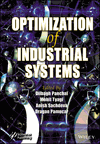An Analytical Model for Estimation of Build Time in Fused Deposition Modelling
Summary
This article presents a method for estimating the build time of a popular additive manufacturing (AM) process, fused deposition modelling (FDM). FDM is widely used due to its affordability and availability. This extrusion-based AM process uses thermoplastic filament as a raw material to produce conceptual models as well as complex finished parts. Time estimation is a necessary requirement for process planning and a comparison of its productivity with other manufacturing processes and proper cost estimation is presented. The time to build a part comprises of the time to build the boundaries and the time required to print the inner portion of the part. A deterministic time estimation model based on part geometry and machine parameters is presented. The geometrical parameters comprise the height, surface area, and volume of the part. The machine parameters comprise of the nozzle diameter, nozzle velocity and acceleration, and other controllable parameters, including layer thickness and infill density. The build time is estimated by considering the kinematics of the nozzle. The time to print a part is greatly influenced by the motion of the nozzle, which may not be known a priori . Hence, apart from the deterministic time estimation model, a statistical method is also employed to consider the variation of the acceleration of the nozzle. For this, a correction factor is estimated based on the range of length traversed by the nozzle in a zigzag path. Finally, the lower and upper estimates of length and the corresponding time estimates are obtained. To demonstrate the efficacy of the proposed methodology, the model is validated with in-house experiments on an FDM machine. It was observed from the findings that the proposed methodology provides reasonably accurate estimates of build time. For all the tested parts, the error was less than 8%.



